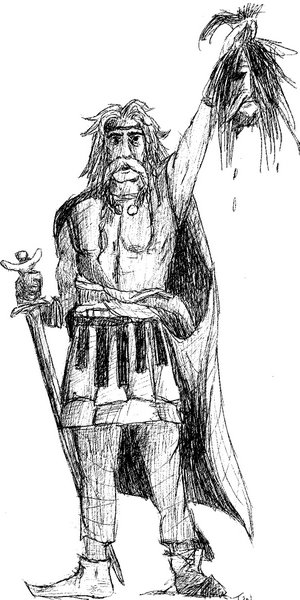We are not experts, but we have been through great troubles and have come out the other side. Others have helped us in our personal healing journeys. To share what we have learned from—and with—them is all we can do.
The Bible says in 2 Corinthians 1:4 (NLT) “He comforts us in all our troubles so that we can comfort others. When they are troubled, we will be able to give them the same comfort God has given us.”
Jon worked for 12 years at an adolescent treatment facility. Some of the teens had been raped, abused by family members, or ran away and were subjected to terrible horrors. Whether it was a simple secret, or a terrible trauma, there was always that time when they had to tell someone. How did those they told respond to the disclosure?
Adults may respond with denial, active or passive anger, or sadness. Possible parental responses range from “believing the victim completely to wondering if the abuse really occurred, as well as feeling anger, blame or resentment toward the victim.”
In TLAB, we deal with this theme several times. The first time is found in what we call the Prologue. (Which eventually may become a first chapter, it is still in process.) In that first scene something not explicitly stated happens to a young man. He is seen trying to get away from someone who has hurt him. When he gains freedom from the attacker, he sits in the filth of a sewer where he has spread the smelly muck on his tunic, much like an abused person spreads his self-deprecating thoughts onto himself. While attempting to cover the memory stench, his family arrives. This is what we wrote for that first description of his family:
“The oldest warrior
chuckled, his greying beard bobbed up and down. The youth caught this, and noted it, pushing it into his
memory for later. Another looked not at him, but to the Roman fairway from
whence they had come. His arms crossed. His booted foot tapped the
cobblestones briskly. He noted that as
well. The third and youngest,
however, stood with legs shoulder width apart in a stance that spoke action. The man laid his hand lightly on his sword. “Where have you
been, boy?” ”
The three responses represent three ways families might respond when they find out something traumatic has happened to their child.
They, first of all, might discount the situation and may even laugh it off. They don’t want to deal with it. They simply “chuckle,” and wish to get back to their orchestrated reality. This character disbelieves, denies, and discounts the situation. He even blames the youth.
Another response is similar in that they don’t want to deal with what happened. In their case they ignore it altogether. Their attention is elsewhere. His father “looked not at him, but to the Roman fairway from whence they had come.”
And thirdly, was a family member who wanted to respond with action. To destroy the attacker was his way of dealing with it. This uncle gave the young man a weapon to overcome his enemy.
Many nonoffending adults are angry and want to get back at the person who hurt their child. They may take them to court or even want to physically hurt them. This uncle went further and actually put the sword in the victim’s hands. Of course this youth is not your average teen in how he thinks. He takes the sword and literally kills the one who hurt him.
But, are these good ways of responding? We could look at the first two and definitely say, “no.” To discount, ignore, or even ridicule the victim, is never appropriate.
We would look at the third response and say, “Yes, kill the evil man!” But would giving him his come-uppance really deal with the situation and the after effects on their lives?
At the psychiatric place Jon worked kids drew pictures or hit pillows to deal with their feelings. Sometimes they would scream in a safe room, do timelines and talk to their therapist. Many times they were given meds to mask the pain. Did that help? Yes, sometimes it gave release and relief. Temporarily, it made them feel good. But in many ways it was sidestepping the problem and only dealing with the symptoms. They tried what ever worked to help them. But, did we ever give them a weapon (a sword or even a gun?) to actually kill the person who hurt them? Obviously not.
What CAN empower a person to overcome the terrible hurt and horrors in their lives that come from another person? What is the greatest weapon one can use that actually heals the hurt? What are your thoughts?
According to the enigmatic Scibonius Largus in TLAB, “Forgiveness is a traveler’s greatest weapon when venturing along a Roman road.”
Is that the answer? Is it enough?
It is our goal to explore this theme in our book.
Resources on this post might include:
1. Bold Love by Dr. Dan B. Allender and Dr. Tremper Longman III
2. The Wounded
Heart: Hope for Adult Victims of Childhood Sexual Abuse. By Dr. Dan B. Allender.
3. National Child
Traumatic Stress Network article on how to respond when a child discloses
traumatic events. http://www.nctsn.org/sites/default/files/assets/pdfs/disclosure.pdf4. Reactions of Nonoffending Parents to the Sexual Abuse of their Child: A Review of the Literature by Ann N. Elliott http://cmx.sagepub.com/content/6/4/314.abstract
5. http://news.illinois.edu/news/11/1205abuse_TedCross.html
6. Working with Nonoffending Caregivers of Children That Have Been Sexually Abused http://www.wcsap.org/working-nonoffending-caregivers-children-have-been-sexually-abused
7. “Experiences of nonoffending parents and caretakers in child sexual abuse cases” http://www.swacj.org/swjcj/archives/8.2/Special%20Article%20fixed%5b1%5d.pdf


don't forget to read the complete prologue--Jon
ReplyDelete